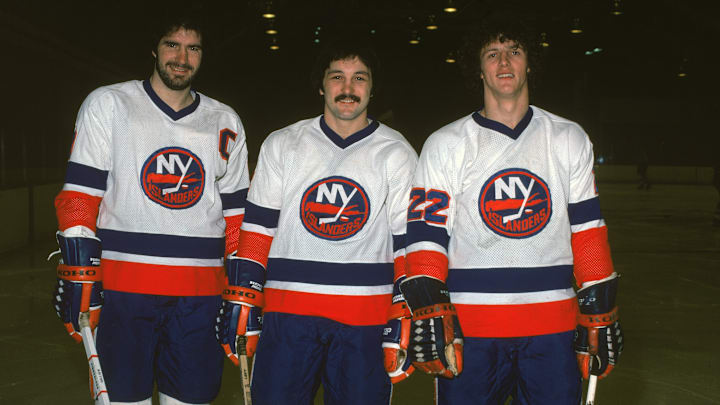RW- Mike Bossy

Arguably the greatest goal scorer to ever lace up a pair of skates, Mike Bossy still remains at the forefront of the NHL record books.
Drafted 15th overall in 1977, Bossy wasted no time becoming one of the most feared snipers in hockey history. During his rookie season in 1978, Bossy totaled 53 goals at age 21 - the most ever for a rookie at the time, which has since been broken by Teemu Selänne, scoring 76 goals in 1992-93. His success earned him Calder Trophy honors as the league's top rookie.
Bossy's rookie campaign was only a sign of things to come. He would top the 50-goal mark in nine of his 10 NHL seasons, eclipsing 60 goals five times. His nine 50-goal seasons are the most ever consecutively and tied for the most overall with Gretzky and Alexander Ovechkin, while his five 60-goal seasons are the most all-time, tied with Gretzky.
Bossy was part of the "Trio Grande" line along with Trottier and Gillies, which was so successful in each of the Islanders' four Stanley Cup runs. After winning the team's third title in 1982, Bossy was named winner of the Con Smythe Trophy as the MVP of the playoffs, scoring 17 goals and ten assists in 19 games.
Aside from being among the most talented players on the ice, Bossy was also recognized for his sportsmanship. Three times ('83, '84, '86), he was awarded the Lady Byng Memorial Trophy given to the player "adjudged to have exhibited the best type of sportsmanship and gentlemanly conduct combined with a high standard of playing ability."
Perhaps the most memorable moment of Bossy's incredible career was becoming only the second player to reach 50 goals in 50 games. Needing two goals in the 50th game of the season, Bossy remained at 48 with five minutes to play. Bossy would beat Quebec Nordiques goaltender Ron Grahame, twice within five minutes to accomplish 50 in 50.
Bossy's illustrious career was cut short at 30 due to lingering back issues. Though his career was short, he still managed to leave his mark on the game. His .762 goals per game is still the highest in league history. He totaled 44 career hat-tricks and led the league in scoring twice (1978-79 and 1980-81) but somehow never managed to win a Hart Trophy for league MVP.
The Rosemere, QC, native was elected to the Hall of Fame in 1991 and had his number retired by the Islanders in 1992.
After announcing that he was diagnosed with lung cancer in October 2021, Bossy passed away six months later, on April 15, 2022.
